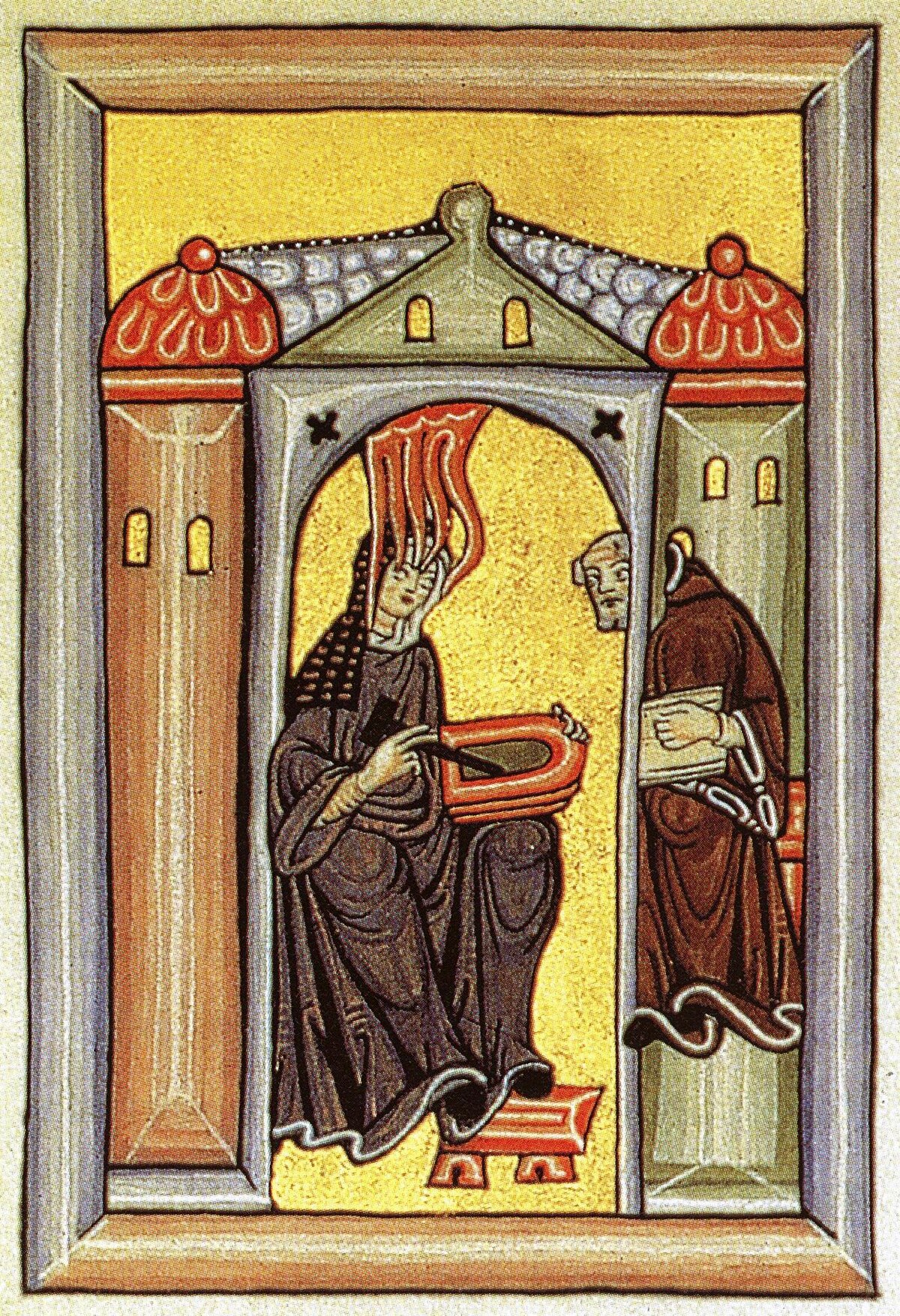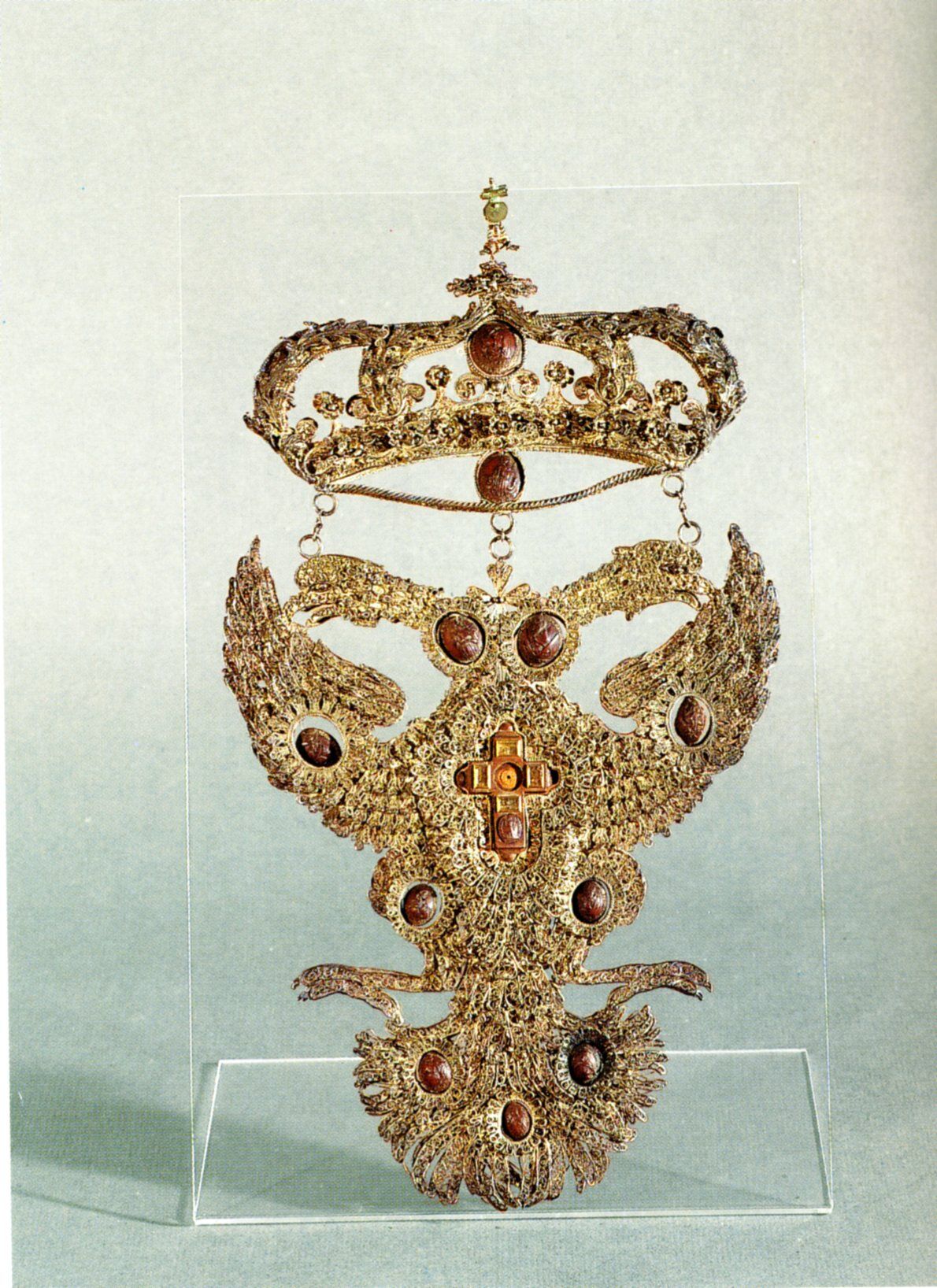The
Middle Ages is not a period of art history that is filled with women artists.
As compared to the number of male artists during the period, it does lack women
influence, but nonetheless, it is filled with women who have made major
contributions to the field. During the Middle Ages, there were strict and
confining social class and gender rules that prohibited women from obtaining
the positions that men held. Unlike men, women were left at home, taking part
in the private sphere of life, while men were in the public sphere, which would
become the societal norm for the years to come. Some women were left to take
care of the home and the kids, while their husbands or father went out to work.
For the most part, women lived a domestic lifestyle and unfortunately, this
domestic lifestyle also caused women's education to suffer. "Education was
thought to interfere with a woman's ability to be a good wife and mother.
Almost no women were taught to read and write" (Guerilla Girls, 22).
Besides being a good wife and mother, all women did perform labor, but it still
revolved around men and their business. "Almost all women worked in
some family business, but the fruits of their labors belonged to men-their
fathers, husbands, or brothers" (Guerilla Girls, 22). Even when it came to
women becoming artists, most of them did go on to work for men. Despite the
predicament, there were women who were an exception to the standard and they
used Christianity to take control of their own lives. Women turned to the Covent
and became nuns. There, women gained artistic and educational freedom, studying subjects from medicine, science, and sacred music.
However, not all women had the
option of turning to the Church for freedom because of their social class at
birth. Even for the women who did, they still suffered from sexism, gender roles, and patriarchy. "Within the
Covent women had access to learning even though they were prohibited from
teaching by St. Paul's caution that 'a woman must be a learner, listening
quietly and with due submission'...they were barred from the forms of power by
which the Church exercised control: preaching, officiating in church, and becoming
priests" (Chadwick, 45-46). In the Church, women had many roles, but one
important role, in which women are known for in art history is being a manuscript illuminator and Hildegard of Bingen is the perfect example. Hildegard Bingen, born in Germany to a wealthy family, was sent to Covent at the age of eight. She was very privileged and became a woman of many functions. She would get visions from God, seeing shimmering lights and Stars, and she would go on to record her visions, in her first book Scivas (c1142-52).
 |
| From Scivas, "The Visionary", Hildegard of Bingen is seen recording her visions, while receiving a message from God |
The Renaissance became an age of role change for women, though it was not an instant role reversal. While women remained stagnant, men continued to flourish, with their work gaining even more recognition. This is why society knows and values men like Michelangelo and Leonardo, instead of the few women from this time period. While the Renaissance pushed for higher thinking among different subjects like science and religion, there was little push for women to gain more recognition as artists. If women did become artists during this age, their level of talent was not deemed equivalent to a man's, simply because women were not allowed to explore the type of mediums that men were able to. Women artists were not taken serious. For example, later in the centuries, women were only deemed to be good enough to paint flowers and dainty images. The only way for women to be labelled an artist was, "...to be born into a family of artists that needed assistance in the family workshop" (Guerilla Girls, 29). This was not the case with many women, so those women were stuck being reduced to the work of embroidery and needling, labor that was considered to "require fewer skills, or skills of a kind that could be easily transferred to new households upon marriage" (Chadwick, 68). With the Renaissance came the creation of Guilds and Academies, that artists could join. "This whole system was, of course, closed towomen. In most cities, women were barred from painters' guilds or academies. They couldn't even receive commissions or legally own an atelier. Most were illiterate" (Guerilla Girls, 29). Women were not given the floor to showcase their work, which is why most of them had no real recognition, equivalent to men artists of the time. Properzia de Rossi, of Bologna, receives the recognition of being the first woman and the only known woman of the Renaissance to sculpt in marble. Being from Bologna, she was able to attend University and be trained by a master engraver. She started out by carving miniatures from cherry stones, ans she would eventually move up to marble. However, her path was not easy because she was not born to a family of artists nor did her social class provide her with recognition. Female sculptors were rare, due to the required strength of sculpting, but she became a trailblazer in the field.
 |
| Properzia de’ Rossi, Grassi Family Coat of Arms at the Museo Civico Medievale, Bologna, c. 1510-30 |
Well into the 19th century, the role of women and their part in art history took a complete turn and for once, women were becoming recognized for the art that they actually wanted to produce. Women began to flourish because of the new opportunities that presented society, including new technological advances. "There were great technologica; advances in the 19th centurt, including fast new ways-like the railroad and steamship-to leave hime.The industrial revolutipn drew people from frms to factories and new tools made art production easier" (Gueriall Girls, 47). Women were now given the option to move and pursue their art, something that was not granted to women of the Middle Ages and the Renaissance. Different societies in the World were not as confining for women as the ones in which women lived in prior to the 19th century. Women became accepted in different parts of the world, as did Edmonia Lewis. Edmonia Lewis, African-American and Chippewa, was born in the United States. For college, she attended Oberlin, where she fell in love with drawing and wanted to pursue a career in art. However, from being falsely accussed and nearly beaten to death by a racist mob, She went to Boston and from Boston she went to Rome, where her sculpting career took off. Her sculptures were made of marble, carved by herself, which people became very fascinated to see black woman carve.
Women like Hildegard of Bingen, Properzia de Rossi, and Edmonia Lewis are a timeline of how far women have come throughout the history of art. With several transformations and leaps between each period of history, these women have set the tone for advancements to come.
Works Cited
The Guerrilla Girls' Bedside Companion to the History of Western Art. Penguin Books, 2006.
Chadwick, Whitney. Women, Art, and Society. Langara College, 2016.
Chadwick, Whitney. Women, Art, and Society. Langara College, 2016.

No comments:
Post a Comment